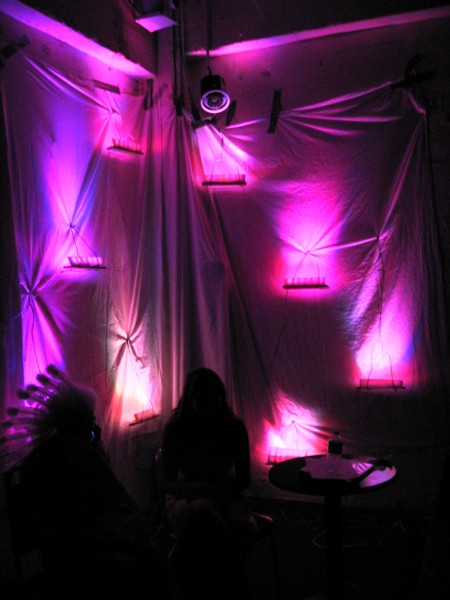
The inspiration for this piece had its origin in two places. First, an episode of Ira Glass's "This American Life," on NPR, in which a man goes to people's houses or offices and tells then the musical intervals that their appliances are making, e.g. the refrigerator hum is a major sixth away from the drone of the wall clock. He also tells them how the different intervals will affect their mood -- 5ths and major thirds feel happier than minor thirds, while dissonant intervals, such as tritones, can be subliminally uncomfortable.
The second inspiration was the sound of the guest shower when I was visiting my parents in florida. There was a low drone from the fan, and the expected sounds of the water droplets hitting the glass. Somehow, almost behind those sounds, there were high tones that sounded like harmonics, and they were consonant with the fan drone and the general ambient sounds. It was a very soothing shower to be in because it sounded so good. I began to imagine what it would be like to hear harmonics related to sounds already present in a room, and started programming.

This piece opens up possibilities of exploring the modification of sound environments in subtle ways that relate to present sounds and how people use the space. The harmonic structure of the soundscape can relate to the ambient sounds in two ways: by restricting the selection of detected notes, which essentially filters a chaotic sound space for a particular harmonic structure; or by changing the set of harmonically related tones which are played. The latter strategy adds a new element to the soundscape of the environment. Future directions for this piece will allow interaction, in which people can modify the parameters that shape the soundscape through some kind of control interface.
Finally, this piece also incorporates a chaotic feedback system, in that if the microphones and speakers are placed in the same room, the system hears the tones it is placing in the room, and reacts to them. It doesn't go into a runaway feedback loop because it doesn't play the same sounds it hears, but related sounds. I am hoping that the interaction of the filtered harmonic structure with the harmonic structure of the played tones will occasionally converge to interesting ongoing patterns.


